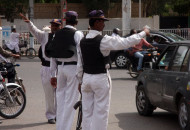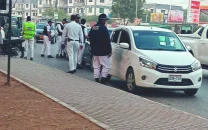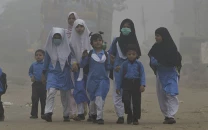No peace without the Taliban
While thinking of the future of Afghanistan, facts on the ground cannot be denied

From whichever angle you see it, none of these questions, or any other, about the present and future of Afghanistan can be answered reasonably without the dreaded six-letter word, the Taliban. The US and its allies, after wasting so much money and blood for almost a decade, cannot claim to have won the war, or even succeeded in crippling the power of the Taliban beyond repair. Frankly speaking, the Taliban are the ones who are fighting against the so-called International Stabilisation Force in Afghanistan, spearheaded by Britain and the United States, thus peace and stability cannot be brought about without their being routed completely or with some mutually negotiated deal.
While thinking of the future of Afghanistan, facts on the ground cannot be denied — denial may score propaganda points, but will never help form realistic expectations. What are these facts? The United States cannot hope to defeat the Taliban, as much as the Taliban cannot hope to defeat the US. The logic of their war falls into a simplistic conventional calculation — increase the adversary’s costs to force him to a reasonable solution.
Another fact is that both the Taliban and the United States, by the logic of their ideological make-up and local, regional and global responsibilities, cannot just pack up and leave Afghanistan. By the same token, the Taliban cannot just disappear, as in they are a reality and should be acknowledged as such. None of the two adversaries is likely to quit the country unless they are assured of their minimal objectives.
Thirdly, the foreign forces, with all the destructive technology and power that they have brought to bear on the Taliban and Taliban-controlled Pashtun regions, cannot compete with factors such as home turf and support from the population. Foreign forces can rent, as they have, some territory and some sectors of the populations, but can never compensate for the foreignness in a hostile climate shaped by national and religious sentiments.
One way the foreign forces and their local Afghan allies tried to deny legitimacy to the Taliban is to portray them as foreigners — in ideas, aspirations and alignments. That has neither worked enough to establish the autonomy of those Afghan factions that support the current foreign intervention or the earlier one by the Soviet Union. Furthermore, this does not diminish the organic links that the Taliban or the mujahideen have with local populations. Without this link, no insurgency can sustain its war efforts or even hope to survive against the odds the Taliban have faced.
Of late, there appears to be latent appreciation of these facts in Washington as well as in European capitals. It seems the reading of these facts began a long time ago, but adjusting to the bitter truths took some time. Afghan leaders, notably President Hamid Karzai and some of his colleagues, understand Afghan society and people better than any one of us in Pakistan or in the western world. If I am not wrong, deadly wars have made Afghans wiser. For this reason, they have increasingly committed themselves to peace and reconciliation among themselves. Clearly, since the Taliban are the central actors in the Afghan insurgency, no peace or reconciliation may be possible without them being a part of it.
Published in The Express Tribune, April 18th, 2011.
















COMMENTS
Comments are moderated and generally will be posted if they are on-topic and not abusive.
For more information, please see our Comments FAQ